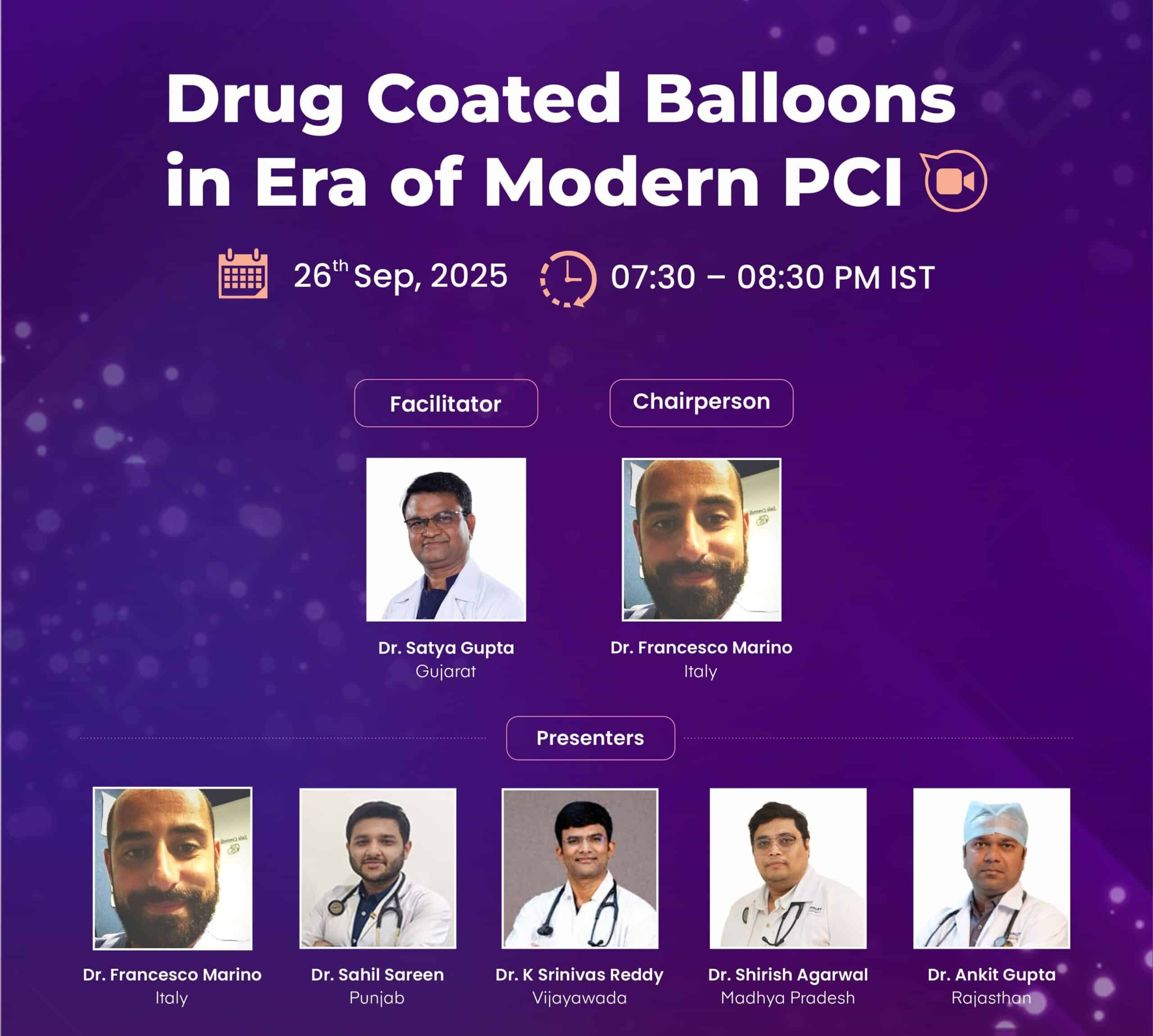When it comes to treating blocked arteries, stents have long been the go-to solution. But in recent years, drug-eluting balloons (DEBs) have emerged as a promising alternative, especially for patients with complex lesions. While the idea of using a balloon instead of a stent might sound surprising at first, DEBs are backed by growing clinical evidence and are steadily carving out their place in the world of coronary intervention.
This blog explores what DEBs are, how they work, their benefits, and where they fit in today’s treatment strategies.
What Are Drug-Eluting Balloons (DEBs)?
A drug-eluting balloon is a specialised type of angioplasty balloon. Unlike traditional balloons used to open up narrowed arteries, DEBs are coated with antiproliferative drugs, typically paclitaxel or sirolimus. These drugs help prevent the re-narrowing of the artery by reducing abnormal cell growth after the procedure.
The DEB delivers the drug directly to the artery wall during inflation, and then it’s removed. That means no permanent implant stays behind, unlike a stent. This “leave nothing behind” approach has key advantages in certain clinical settings, especially in DCB for complex coronary lesions.
How Drug-Eluting Balloons Work
The technology behind DEBs lies in balloon catheter drug delivery. During drug eluting balloon angioplasty, the catheter carrying the drug-coated balloon is guided through the blood vessels to the blockage site. Once in position, the balloon inflates for a short period, usually around 30 to 60 seconds, allowing the drug to be absorbed by the vessel wall.
After deflation, the balloon is removed, but the therapeutic effect remains. The drug continues to act locally, minimising the chances of scar tissue formation or restenosis (re-blockage).
This technique has proven particularly useful in vessels where placing a stent is risky or suboptimal, such as very small arteries, bifurcations, or previously stented areas.
Benefits of Drug-Eluting Balloons
There are several well-documented drug-eluting balloon benefits that make them a valuable tool in coronary treatment:
-
No Permanent Implant: Since DEBs don’t leave a scaffold behind, the artery retains its natural flexibility and structure, reducing long-term complications associated with metal implants.
-
Lower Risk of Late Thrombosis: Without a foreign object inside the artery, there’s less risk of delayed blood clots forming, which sometimes occur with stents.
-
Shorter Dual Antiplatelet Therapy (DAPT): DEB patients often require shorter durations of blood-thinning medications, making this a safer option for those at higher bleeding risk.
-
Ideal for Complex Scenarios: For restenosis in previously stented arteries or lesions located in small, tortuous vessels, DEBs can be more effective than stents.
-
Encourages Natural Healing: The lack of mechanical stress from a stent allows the artery to heal more naturally, a critical consideration in long-term outcomes.
These benefits, combined with growing data, are shifting how interventional cardiologists view the drug-eluting balloon vs stent treatment decision.
Clinical Applications in Complex Lesions
One of the strongest cases for DEBs is in treating complex coronary lesions, areas that are particularly difficult due to shape, size, or previous treatments.
Common examples include:
-
In-stent restenosis: When a previously implanted stent narrows again, DEBs can effectively treat the lesion without adding another layer of metal.
-
Small vessel disease: In arteries less than 2.5 mm in diameter, DEBs outperform DES in many cases.
-
Bifurcation lesions: Where arteries split, using a DEB avoids complex double-stenting techniques.
-
Calcified lesions (with preparation): When properly prepared using atherectomy or scoring balloons, DEBs can be effective in delivering medication even in tough, calcified plaque.
Clinical trials and meta-analyses increasingly support the use of DEBs for complex coronary lesions, citing similar, if not superior, outcomes to stents in the right conditions.
DEBs vs DES: When to Use Each
Choosing between a drug-eluting balloon and a drug-eluting stent isn’t a matter of which is better, it’s about which is better for the situation. Each option has its place depending on the lesion type, vessel anatomy, and patient profile.
| Criteria | Drug-Eluting Balloon (DEB) | Drug-Eluting Stent (DES) |
| Vessel Size | Small or delicate vessels | Large, straightforward vessels |
| Previous Treatment | Ideal for in-stent restenosis | Suitable for first-time lesions |
| Bleeding Risk | Suitable for patients with high bleeding risk (shorter DAPT) | Requires longer DAPT, not ideal for high bleeding risk |
| Need for Permanent Support | No permanent implant; preserves vessel structure | Provides structural support with a metal scaffold |
| Lesion Type | Favorable in soft or fibrotic lesions after good preparation | Better for calcified lesions needing strong scaffolding |
| Balloon Expansion | Requires good lesion preparation for optimal drug delivery | Balloon and stent systems can expand tight lesions with mechanical support |
| Foreign Body Concerns | No foreign body left behind, reducing long-term inflammation or thrombosis risk | Foreign material remains, with potential for long-term reaction |
| Healing | Encourages natural healing of the vessel wall | May delay healing due to the presence of the stent |
| Use in Bifurcation Lesions | Preferred to avoid complex stenting strategies | More complex to manage, especially in bifurcations |
Conclusion
Drug-eluting balloons are transforming the landscape of coronary intervention. By delivering potent drugs directly to the artery wall without leaving a permanent implant, they offer a safe and effective option in complex lesions such as small vessels, bifurcations, and restenotic stents.
At Translumina, we continue to advance this innovation with the Protégé Drug-Eluting Balloon—the world’s first and only DEB available in both semi-compliant and non-compliant versions. This unique platform combines precision drug delivery with flexibility, empowering physicians to manage even the most complex cases with confidence.
With growing clinical evidence and continuous technological progress, DEBs are set to play an increasingly central role in personalized, safer, and more effective cardiovascular care.



